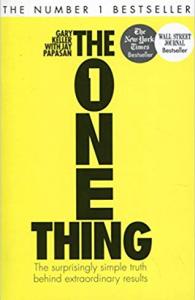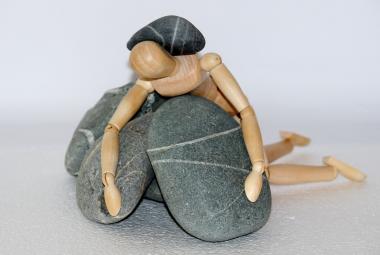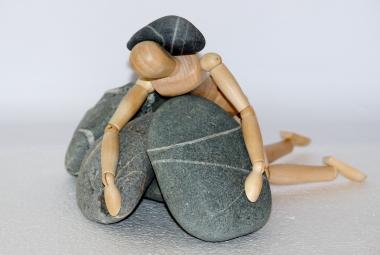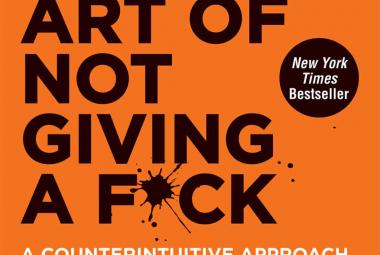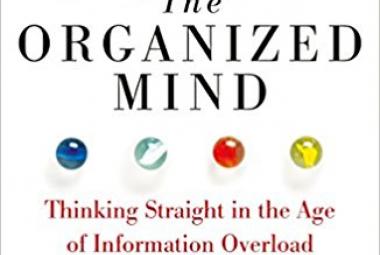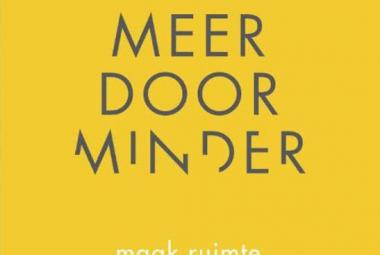In their book The One Thing, Gary Keller and Jay Papasan describe the power of focus when you want to be productive. In the words of the authors: "be like a stamp, and hold on to that one thing until you have arrived". This book consists of four parts, each of which is briefly described in this article: the metaphor of the dominos, six lies that stand between you and your success, the simple path to productivity, and four tips to become even more productive.
Chapter 1-3 describes THE METAPHOR OF THE DOMINOS. Each domino in this line represents an action that you can do to reach your final goal (the last domino).
The challenge is just to find that first domino that you have to push over to reach your goal. Of course, you only focus on that one domino and do not be distracted from your goal.
The beauty of dominoes is that each stone can push a next stone that is twice as big. The same counts for achieving your goals. When you perform a small action related to your goal today, you can carry out a slightly larger action tomorrow, and in the end you can move mountains with it.
The longer you focus on the same goal, the greater the results become and the more successful you are. Success is built sequentially, and not in one go.
Chapter 4-9 describes THE SIX LARGE LIES THAT BETWEEN YOU AND YOUR SUCCESS. Here are the six reasons why you might not make your dream come true.
Lie 1: Everything is equally important. This is simply not true. Use the Pareto principle (20% most important tasks with which you achieve 80% of the result) just as often, until you only have one task left. And focus on that. (Also see the summary of: the 80/20 Manager, by Richard Koch)
Lie 2: you need discipline to be successful. This is also not true. A habit just happens, you do not need discipline to hold on to your habits. Make focussing on 1 thing your new habit and push one small domino over every day.
Lie 3: your life needs to be in balance. This is also not true. Extraordinary things never happen in the middle, they happen at extremes. Nobody excelled in all areas of life. The most successful people in one area (like a top athlete or, for example, a top manager in a company) sacrifice other parts of their lives to spend time on what is important to them. It should of course be noted that you do not cross the border and completely neglect another part of your life.
Lie 4: Getting more done by multitasking. Like any other self-development book, these authors also describe that this is not true. By changing tasks we lose on average 33% of our time, and dividing our attention can even have serious consequences for our personal relationships when we are not 100% focussing during a conversation with a loved one but keeping one eye on the TV or on our phone.
Lie 5: it is a question of willpower. No. Your energy and attention is like a battery, which has to be charged when it runs out (also see the summary of: The Corporate Athlete of K.Gonnissen & A.Goudsmet). Willpower does not help if you do not have the energy to fully commit yourself to a task. Start on your one thing at the beginning of the day, if you still have energy left, then you have a satisfied feeling for the rest of the day.
Lie 6: big is bad. Not at all. The larger the last domino you define, the more creative you will become to define the small domino you need to achieve.
Chapter 10-12 describe THE SIMPLE PAD TO PRODUCTIVITY and for this the authors mainly describe the following one question that you can ask yourself every day for different aspects of your life: what is the one thing that I can do now, that when I do, it will be easier for myself in the future?
Answer this question, take the action, and enjoy the benefits in the future!
Finally, Chapter 13-18 describes DIFFERENT IDEAS FOR GROWING YOUR PRODUCTIVITY.
Tip number 1: the best path to productivity is target prioritization. That means that when you know what your goal is and where you want to go, you have to prioritize on the basis of that wish. When you have 5 tasks on your action list, start with that one task that contributes the most to your long-term goal. When you always keep in mind what your goal is, it becomes much easier to define this next-following domino.
Tip number 2: write down your goal and discuss it with others. Gail Matthews of the Dominican University of California found that people who wrote down their goals are 39.5% more likely to reach their goal, and people who discuss their goal with others no less than 76.7%!
Tip number 3: plan time for your 'one thing' (preferably at least three blocks of 5 hours, and visualize your progress. When you check every day if you have worked on your goal, you naturally want to avoid large holes in your calendar.
Tip number 4: prevent your health from getting in the way of achieving your goal. You can meditate for spiritual energy. For physical energy, you need to eat healthy, sleep well and exercise. For emotional energy you need love and hugs from your loved ones. For mental energy, it helps to formulate goals and make plans, and finally you get a lot of business energy when you plan time for your one thing!
The One Thing is an easy-to-read book filled with motivation to reflect on what you want to achieve. What is your one thing?
Ga verder naar:
The Four Hour Workweek - T.Ferriss (summary)
REFERENCE:
Keller, G., Papasan, J., 2012, The One Thing – The Surprisingly Simple Truth Behind Extraordinairy Results. US: Rellek Publishing Partners. (order this book)


